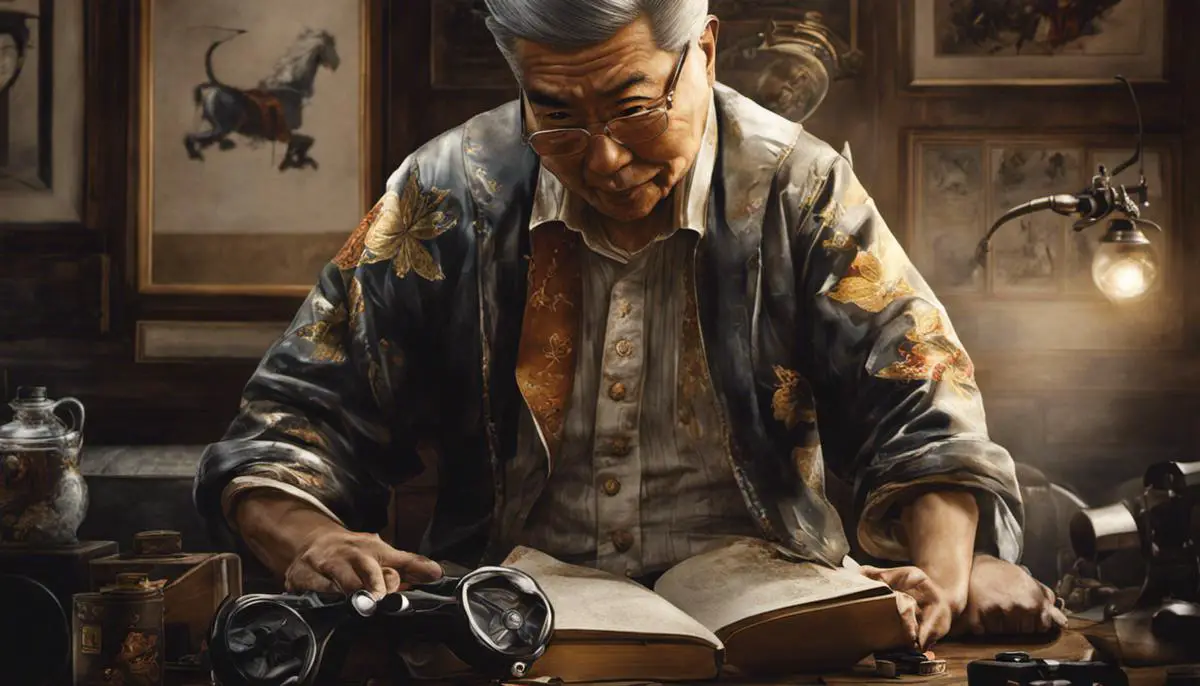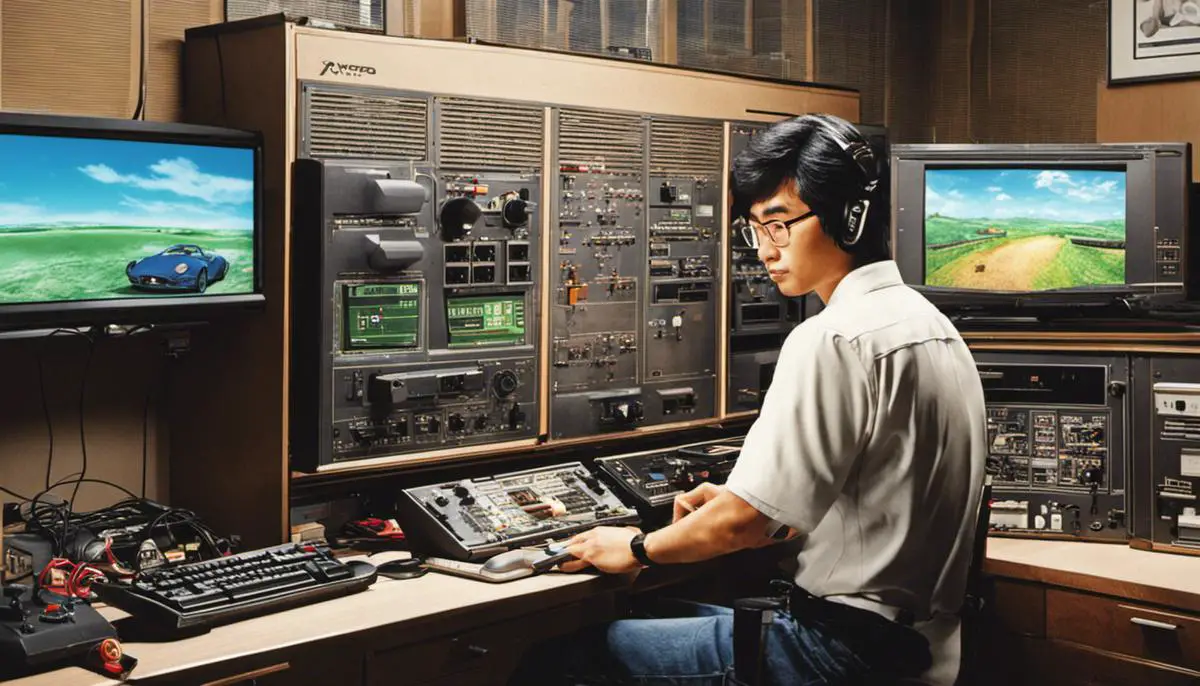Genyo Takeda, a trailblazer in the gaming industry, has left an indelible mark on the fabric of interactive entertainment technology. Born and bred in the culture-rich environment of Japan, Takeda’s life and educational beginnings shape an intriguing narrative of talent and industriousness.
This portrait of the digital visionary commences from the exploration of his childhood and education, unfolding his early attraction towards game design. His journey showcases a compelling story of a young, curious mind whose fascination with technology invariably spiraled into a career that would revolutionize the gaming world and set the stage for an innovative future.
Early Life and Education of Genyo Takeda

Early Life and Birthplace: Hokkaido, Japan.
Genyo Takeda was born on March 7, 1949, in Sapporo, Japan’s fifth-largest city located in the northern island of Hokkaido. Japan was just rebuilding from the devastation of World War II during Takeda’s early years, and the country’s traditional culture was giving way to a growing interest in Western technology and lifestyle.
Childhood and Initial Interest in Electronics
Growing up, Takeda found a fascination in the magical world of electronics, fueled by the media he consumed. Japan was undergoing a technological revolution in the 1960s with the rise of consumer electronics. Television was a new novelty, beaming images from around the world into homes across Japan, and capturing the young imagination of Takeda.
Education and the Entrance into Game Design
After high school, Takeda attended the College of Technology in Kushiro, Hokkaido, where he studied technical physics. It was there that he developed a greater understanding of electronics, programming, and technology overall.
However, his turning point came in 1971 when he joined the company that would later become a household name worldwide: Nintendo. The company was then a budding game business, which pivoted from being an established playing card company, and Takeda was one of its first recruits.
He joined straight out of college as a technical engineer and became the company’s third game designer ever, following Gunpei Yokoi and Masayuki Uemura, who were responsible for creating the Game Boy and the NES home console respectively. Nintendo recognized Takeda’s technical skills and his creativity, allowing him to explore his own concepts and approaches to game design.
Early Career and Notable Achievements
During the early years of his career at Nintendo, Takeda worked on arcade games, starting off on a horse racing game called ‘Evans Races’ in 1975. He was one of the leading figures behind the company’s leap into video game console development during the late 1970s — he produced the early predecessors to the modern gaming systems we enjoy today.
One of his prominent works includes the development of the punching-bag arcade game, ‘Punch-Out’, which eventually became a significant title for the Nintendo gaming catalog. Notably, he also played a pivotal role in the creation of the iconic ‘Legend of Zelda’ series. Takeda was also instrumental in the realization of other milestone gaming technologies such as the Nintendo 64 and the Wii console.
Life and Career Overview
Genyo Takeda, an influential individual in the gaming industry, has used his academic background and passion for electronics to foster significant advancements in digital games. His technological contributions have greatly impacted Nintendo and revolutionized the overall gaming realm.
Career Highlights and Contributions to Nintendo

Commencing His Journey With Nintendo
Born on March 7, 1949, in Osaka, Japan, Takeda came onboard Nintendo in 1972. He was one of the initial game developers the company brought in during their transition to digital gaming, marking an imperative shift in Nintendo’s development. Through his expertise in technology, Takeda swiftly secured critical acclaim within the organization.
Innovative Game Design: Punch-Out!!
Takeda’s impact began promptly as he started his work at Nintendo. In 1983, Takeda led the team that developed the popular Nintendo title, Punch-Out!! Working under the pseudonym “T. Yokoi,” he not only introduced a new gaming concept but also managed to overcome technical obstacles in bringing this boxing-themed game to life. The game, created during the 8-bit era, was an instant success and is now considered a classic.
Architecting Nintendo’s Hardware: Nintendo 64 and Wii Consoles
Takeda’s expertise was not limited to software development. As the General Manager of Nintendo’s Integrated Research & Development (IR&D) division, Takeda oversaw the development of multiple Nintendo interactive systems, including the Nintendo 64, GameCube, Wii, and Wii U. He was instrumental in the design and development of these gaming consoles. The Nintendo 64, for example, was praised for its advanced graphics and game performance, whereas the Wii introduced a unique motion-interaction user experience that has significantly influenced modern gaming systems.
Advocating Lower Power Consumption
One of Takeda’s primary focuses at Nintendo was advocating for lower power consumption in console design. He argued that excessive power consumption was not healthy for devices and pushed for design innovation that maximized both efficiency and performance. His effective power management philosophy has had a lasting impact on Nintendo’s product design.
Role as Representative Director and Technology Fellow
Takeda’s relentless efforts and unique understanding of both the hardware and software aspects of video game systems led to his promotion to senior managing director in 2002. In 2015, following the death of president Satoru Iwata, Takeda was appointed as one of Nintendo’s Representative Directors, alongside Shigeru Miyamoto. As a Technology Fellow, Takeda shared his wealth of knowledge and experience, helping to shape the next generation of technological innovations at Nintendo.
Takeda’s Impact at Nintendo
Upon his retirement from Nintendo in 2017, Genyo Takeda left a substantial legacy that continues to enhance the company’s renowned status within the gaming industry. His exceptional ability to balance aesthetics, performance, and energy efficiency set him apart, establishing him as a pivotal figure in video gaming history. Even after his retirement, Takeda’s imaginative approach and tech-inspired thinking continue to guide Nintendo’s operations and are still felt in the company’s philosophy.
Significance in Game Design and Legacy

Trailblazer Genyo Takeda: Pioneering Video Game Design and Technology
Genyo Takeda is a celebrated innovator in the realms of technology and game design. His four-decade-long career has indelibly imprinted upon the gaming world, with his accomplishments at Nintendo setting industry-wide standards that inspire budding game designers.
Takeda’s influence touched both hardware and software, reshaping the gaming experience itself. Most notably, he was the driving force behind the distinctive designs of the Wii and Wii U consoles. Takeda led the gaming industry away from concentrating solely on graphics and into a new era focused on fun and fitness-oriented gaming experiences.
Beyond console design, Takeda made monumental contributions to game design. He is renowned for spearheading the creation of iconic games like “Punch-Out!!” and “StarTropics.” His design precepts, which consistently placed entertaining gameplay over impressive graphics or sound, have been adopted as integral principles by many game developers.
Innovation was the cornerstone of Takeda’s work. This is visible in the numerous patents bearing his name – Takeda is cited as the inventor in over 70 patents filed by Nintendo. His groundbreaking initiatives have imbued Nintendo with a unique market position and have laid the groundwork for future advancements in the gaming industry.
Recognition and Legacy
Over the course of his career, Takeda has earned a number of recognitions for his contributions to the gaming industry. One of the most prestigious honors bestowed upon him was the Lifetime Achievement Award at the 2018 DICE Awards, recognizing his impact on the industry as a whole.
Takeda’s legacy continues to live on, even after his retirement from Nintendo in 2017. His philosophy for game design, especially his emphasis on fun and engagement rather than a game’s technical aspects, continues to influence contemporary video game designers. Moreover, the innovative gaming devices he designed, such as the Wii, continue to inspire new products and applications within the gaming industry.
Throughout his career, Takeda was revered as a forward-thinking pioneer who helped shape the face of modern gaming. Even in his retirement, he continues to inspire a new generation of game designers with his creative vision and enduring passion for innovative game design. His influence on the industry has made him a true icon in the world of video games.

Genyo Takeda’s legacy extends far beyond his time at Nintendo, reaching the hearts and minds of countless gamers and tech enthusiasts worldwide. His unwavering dedication to innovation not only set new standards within the gaming industry but also inspired subsequent generations of game designers. As one reflects on Takeda’s life and his remarkable contributions to Nintendo, it’s clear that his impact resonates throughout the landscape of modern entertainment technology. The recognition and honors bestowed on him bear testimony to his exceptional work, forever engraving his name in the annals of gaming history. Reading through Takeda’s story, it becomes apparent that his is a life continuously driven by an undying passion for game design, a legacy that will continue to inspire for generations to come.

